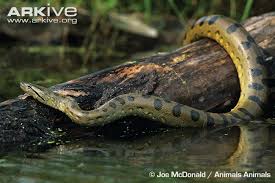Post by dinosauria101 on Oct 7, 2019 20:29:15 GMT 5
Wild Boar - Sus scrofa
Wild boar, also known as wild pig, (Sus scrofa) is a species of the pig genus Sus, part of the biological family Suidae. The species includes many subspecies. It is the wild ancestor of the domestic pig, an animal with which it freely hybridises. Wild boar are native across much of Northern and Central Europe, the Mediterranean Region (including North Africa's Atlas Mountains) and much of Asia as far south as Indonesia. dult boars measure 90–200 cm (35–79 in) in length, not counting a tail of 15–40 cm (5.9–16 in), and have a shoulder height of 55–110 cm (22–43 in). As a whole, their average weight is 50–90 kg (110–200 pounds), though boars show a great deal of weight variation within their geographical ranges. In central Italy, their weight usually ranges from 80 to 100 kg (180 to 220 lb) while boars shot in Tuscany have been recorded to weigh up to 150 kg (331 lb). An unusually large French specimen shot in Negremont forest in Ardenne in 1999 weighed 227 kg (550 lb). Carpathian boars have been recorded to reach weights of 200 kg (441 lb).

Green Anaconda - Eunectes murinus
Eunectes murinus is a non-venomous boa species found in South America. It is the heaviest known snake species. The term anaconda (without further qualification) often refers to this species, though the term could also apply to other members of the genus Eunectes. Eunectes murinus is found in South America east of the Andes, in countries including Colombia, Venezuela, the Guianas, Ecuador, Peru, Bolivia, Brazil, the island of Trinidad and as far south as northern Paraguay. Anacondas live in swamps, marshes, and slow-moving streams, mainly in the tropical rain forests of the Amazon and Orinoco basins. They are cumbersome on land, but stealthy and sleek in the water. Their eyes and nasal openings are on top of their heads, allowing them to lie in wait for prey while remaining nearly completely submerged. The Green Anaconda is one of the world's longest snakes, reaching more than 6.6 m (22 ft) long. Reports of anacondas 35 – 40 feet or even longer also exist, but such claims need to be regarded with caution as no specimens of such lengths have ever been deposited in a museum and hard evidence is lacking. Although the reticulated python is longer, the anaconda is the heaviest snake. The longest (and heaviest) scientifically recorded specimen was a female measuring 521 cm (17 ft 1 in) long and weighing 97.5 kilograms (215 lb).

encrypted-tbn0.gstatic.com/images?q=tbn:ANd9GcRxWudYv9Xjkcu9dBmRO61qZuqF6HOfO90ksH5mYML7E-xC4itr3w
Credit to Wikipedia
NOTE: This is now sympatric as they are both in the Everglades as invasive species
Wild boar, also known as wild pig, (Sus scrofa) is a species of the pig genus Sus, part of the biological family Suidae. The species includes many subspecies. It is the wild ancestor of the domestic pig, an animal with which it freely hybridises. Wild boar are native across much of Northern and Central Europe, the Mediterranean Region (including North Africa's Atlas Mountains) and much of Asia as far south as Indonesia. dult boars measure 90–200 cm (35–79 in) in length, not counting a tail of 15–40 cm (5.9–16 in), and have a shoulder height of 55–110 cm (22–43 in). As a whole, their average weight is 50–90 kg (110–200 pounds), though boars show a great deal of weight variation within their geographical ranges. In central Italy, their weight usually ranges from 80 to 100 kg (180 to 220 lb) while boars shot in Tuscany have been recorded to weigh up to 150 kg (331 lb). An unusually large French specimen shot in Negremont forest in Ardenne in 1999 weighed 227 kg (550 lb). Carpathian boars have been recorded to reach weights of 200 kg (441 lb).

Green Anaconda - Eunectes murinus
Eunectes murinus is a non-venomous boa species found in South America. It is the heaviest known snake species. The term anaconda (without further qualification) often refers to this species, though the term could also apply to other members of the genus Eunectes. Eunectes murinus is found in South America east of the Andes, in countries including Colombia, Venezuela, the Guianas, Ecuador, Peru, Bolivia, Brazil, the island of Trinidad and as far south as northern Paraguay. Anacondas live in swamps, marshes, and slow-moving streams, mainly in the tropical rain forests of the Amazon and Orinoco basins. They are cumbersome on land, but stealthy and sleek in the water. Their eyes and nasal openings are on top of their heads, allowing them to lie in wait for prey while remaining nearly completely submerged. The Green Anaconda is one of the world's longest snakes, reaching more than 6.6 m (22 ft) long. Reports of anacondas 35 – 40 feet or even longer also exist, but such claims need to be regarded with caution as no specimens of such lengths have ever been deposited in a museum and hard evidence is lacking. Although the reticulated python is longer, the anaconda is the heaviest snake. The longest (and heaviest) scientifically recorded specimen was a female measuring 521 cm (17 ft 1 in) long and weighing 97.5 kilograms (215 lb).
encrypted-tbn0.gstatic.com/images?q=tbn:ANd9GcRxWudYv9Xjkcu9dBmRO61qZuqF6HOfO90ksH5mYML7E-xC4itr3w
Credit to Wikipedia
NOTE: This is now sympatric as they are both in the Everglades as invasive species


